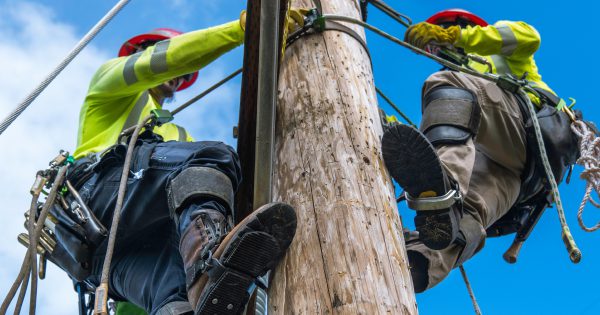This blog series by IFS explores the 2022 Gartner Market Guide for Mobile Workforce Management Software for Utilities (published by Gartner in May 2022). In this post, we examine the resilient utility and the use of business-focused, performance-based assessments to align processes with business priorities.
Gartner calls this out as a key finding in the guide, emphasizing how data access and orchestration via system integration investments enable utilities to align and improve workforce and operational requirements. This is timely feedback as utilities struggle to maintain existing operations and prepare for the future.
A balanced approach
Innovation is exciting, especially when applied to an established industry reinventing itself. But for utilities, modernization is not a singular focus. It can’t be. Utilities are under extreme pressure to invest in new technologies that support the inevitable shift to a sustainable energy model. But they are also expected to keep the lights on, the water running, and the gas flowing safely and affordably.
Leaders must look ahead and actively plan for the future, preparing for increasing climate change impacts, a new energy mix, ever-aging infrastructure, and the reality of a reduced workforce and capital to fund all of this.
In tandem, they must also focus on the existing operation, ensuring worker safety while improving reliability, resiliency, and speedy recovery from disasters of increasing frequency and severity. It’s a big job.
Pressed to modernize and adapt while maintaining business as usual, utilities are turning to Mobile Workforce Management (MWM) technology to help prioritize and organize the work.

Resiliency and reliability
With so many moving pieces—especially in reactive scenarios—the utility must consider all options and outcomes before acting.
Business leaders must ensure limited resources (workforce, assets, capital) are applied strategically. With inadequate budgets, every investment requires a critical eye.
Worker safety is paramount. Aging equipment, responding to outages from weather events, restoration of services, working in the field in remote locations, in lone-worker situations, or on hazardous activities—all these scenarios must be assessed and approved before workers are mobilized.
MWM with advanced Workforce Planning and Scheduling Optimization systems provide a singular, real-time view of the operation, allowing planners, schedulers, and dispatchers to explore what-if scenarios before settling on the safest, most efficient, and most cost-effective plan.
Too much work and not enough hands
During this period of unprecedented growth and change—when utilities need to expand capabilities—there are fewer skilled workers than ever before.
To optimize efficiencies in workforce planning, MWM calculates outstanding work based on the best value to the business. It assesses the criticality of each job, compares it to the available resource pool, and applies the most appropriate technician to perform the right work at the right time.
Technicians can attend more calls in a day, driving up productivity without increasing headcount.
 Ongoing innovation
Ongoing innovation
MWM technology provides advanced, enterprise-grade support, leveraging artificial intelligence and machine learning to drive innovations. Here are some examples:
1. Matchmaking work orders to the workforce:
MWM builds intelligence into the scheduling engine. Using real-time data and automation, the system automatically assigns service calls to the most appropriate worker. Day-to-day work is managed by the technology in real-time, allowing dispatchers to focus on the exceptions.
The system identifies opportunities to bundle higher priority work with less urgent repairs to save on travel time and budget and even reduce the utility’s carbon footprint with fewer truck rolls.
2. Field worker empowerment
Some service calls require an expert with specialized knowledge and experience. Rather than wait for a time slot when an expert can attend in person, MWM connects the specialist with the technician virtually via augmented reality, guiding them through the workflow to ensure a safe and proper result.
Many options exist with remote assistance. Work packages can be created to accompany service orders, providing instructional guides, tooltips, training tutorials, videos, manuals, and other information to empower the technician.
MWM with workforce planning and scheduling optimization can even set service call durations based on the worker’s proficiency, providing more time for those less experienced versus technicians with proven expertise in the area.
Previously, these types of insights, worker experience, training, distance to job, etc., were applied by planners and dispatchers who relied on their innate understanding of the operation and the employees. Today, these human insights are integrated and automated within the MWM system.
3. Just-in-time planning and scheduling
MWM technology supports data integration across multiple enterprise systems, acting as a single data recipient for all the operational data considered when planning and scheduling.
For example, with a singular view of the entire workforce, including location, skills, certifications, and other details by workers, planners can easily predict and respond to potential deficits in capacity and coverage before operations are negatively impacted.
These insights allow the utility to proactively implement cross-training and other activities to ensure the skills of the workforce align with the current and future needs of the business.
Finishing what we started
The good news is that many utilities have already begun their MWM journey. Typically the technology is applied to a particular use case, for example, automating outage restoration work or streamlining customer service teams.
The bad news is that this piecemeal approach leaves other parts of the operation stranded, reliant on manual workflows and paper assets—systems that have been in place for decades and built to support work models that are no longer relevant.
This scenario represents the last mile in MWM modernization and achieving a singular view of the operation within one tool.
Leading with resiliency
In the 2022 Gartner®️ Market Guide for MWM Software for Utilities, CIOs are advised to carry out a business-focused, performance-based assessment of current capabilities against business priorities, for example, outage response, digital maturity, and work management process maturity. The results will determine if existing MWM implementations are adequate or if the business will benefit from further expansion.
Gartner provides additional insights for CIOs on MWM market directions and vendor offerings in the full report. Get your complimentary copy now.
Next up in this blog post series: The composable utility and how these organizations are shifting to modular enterprise applications to support rapid innovation and adaptability.